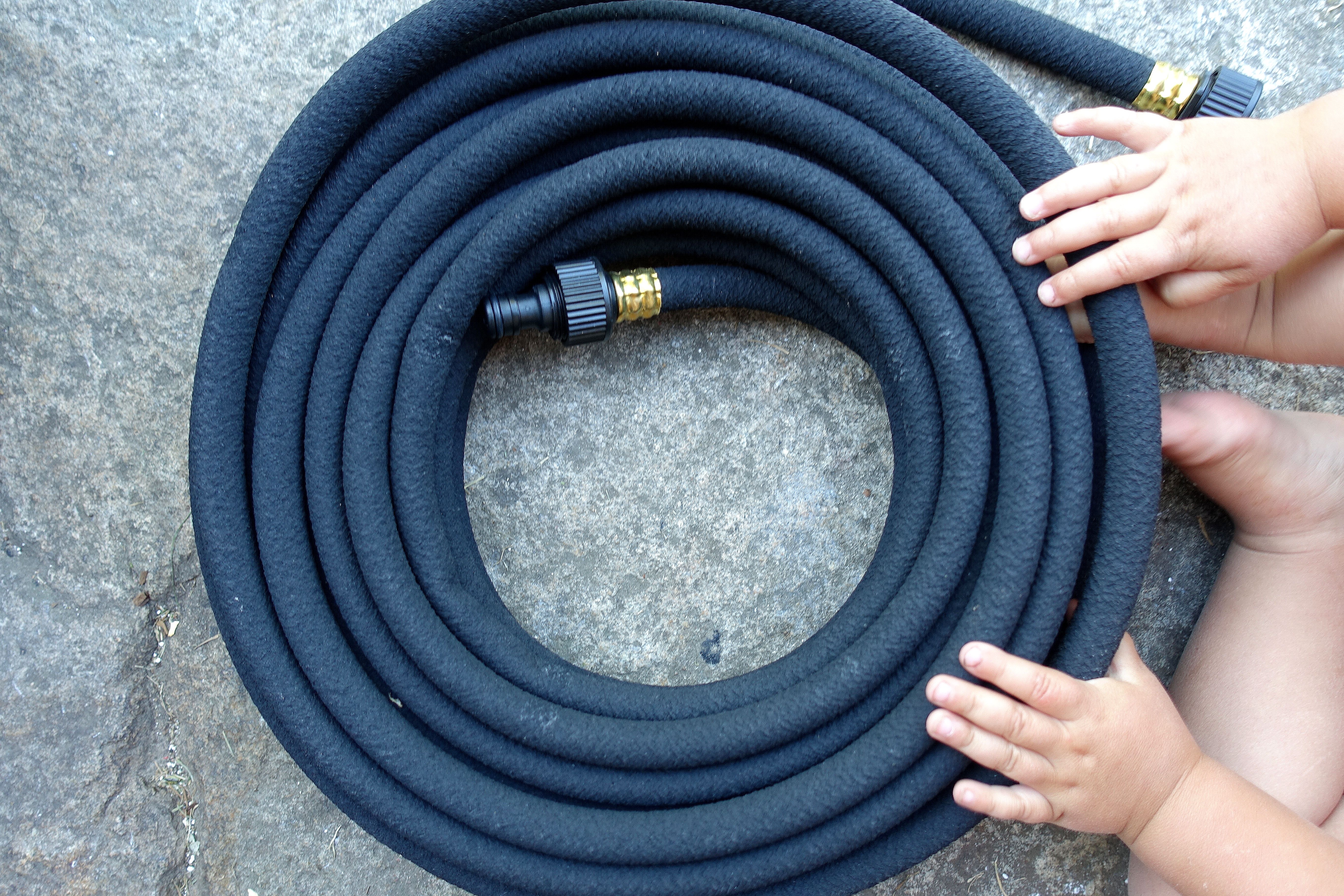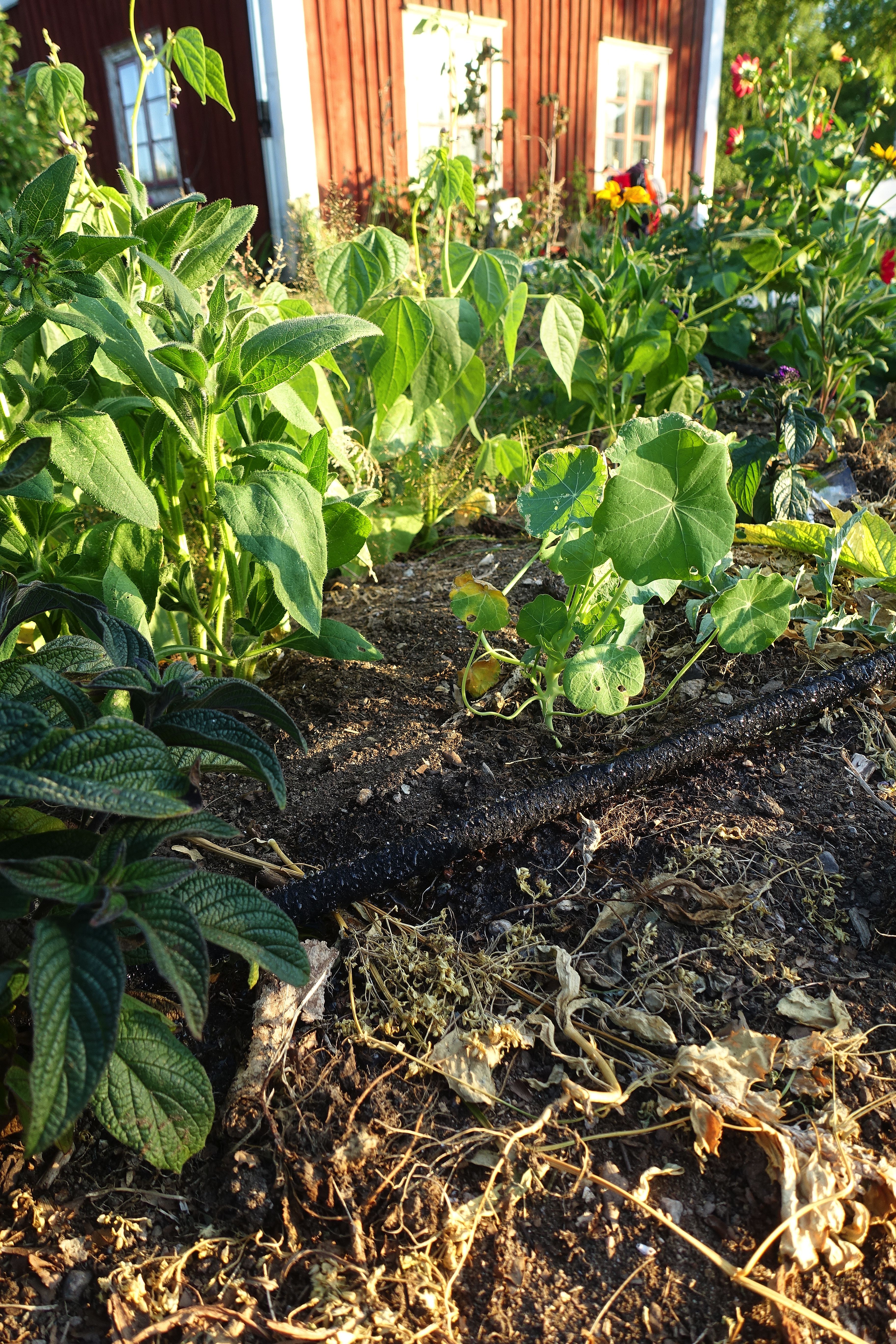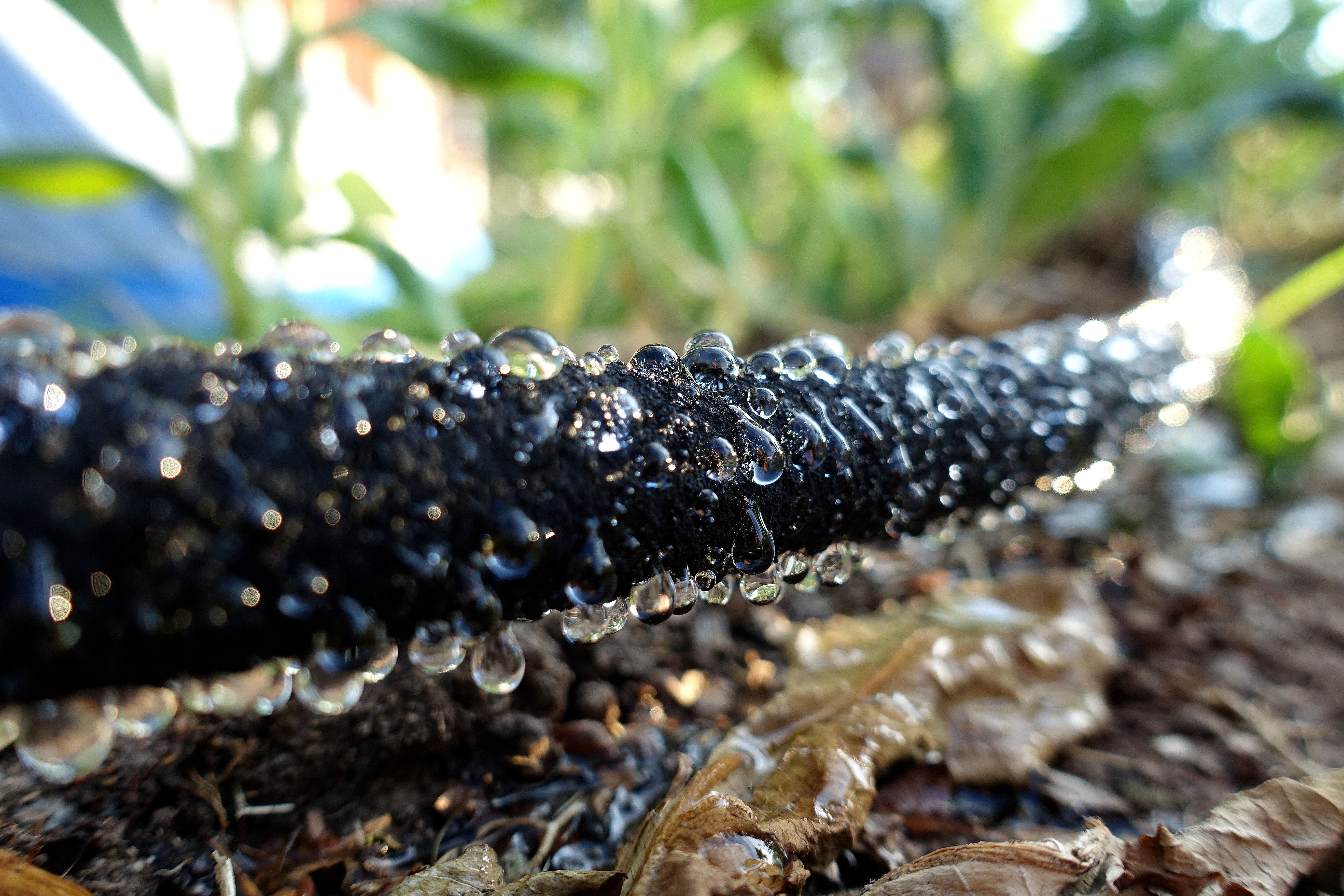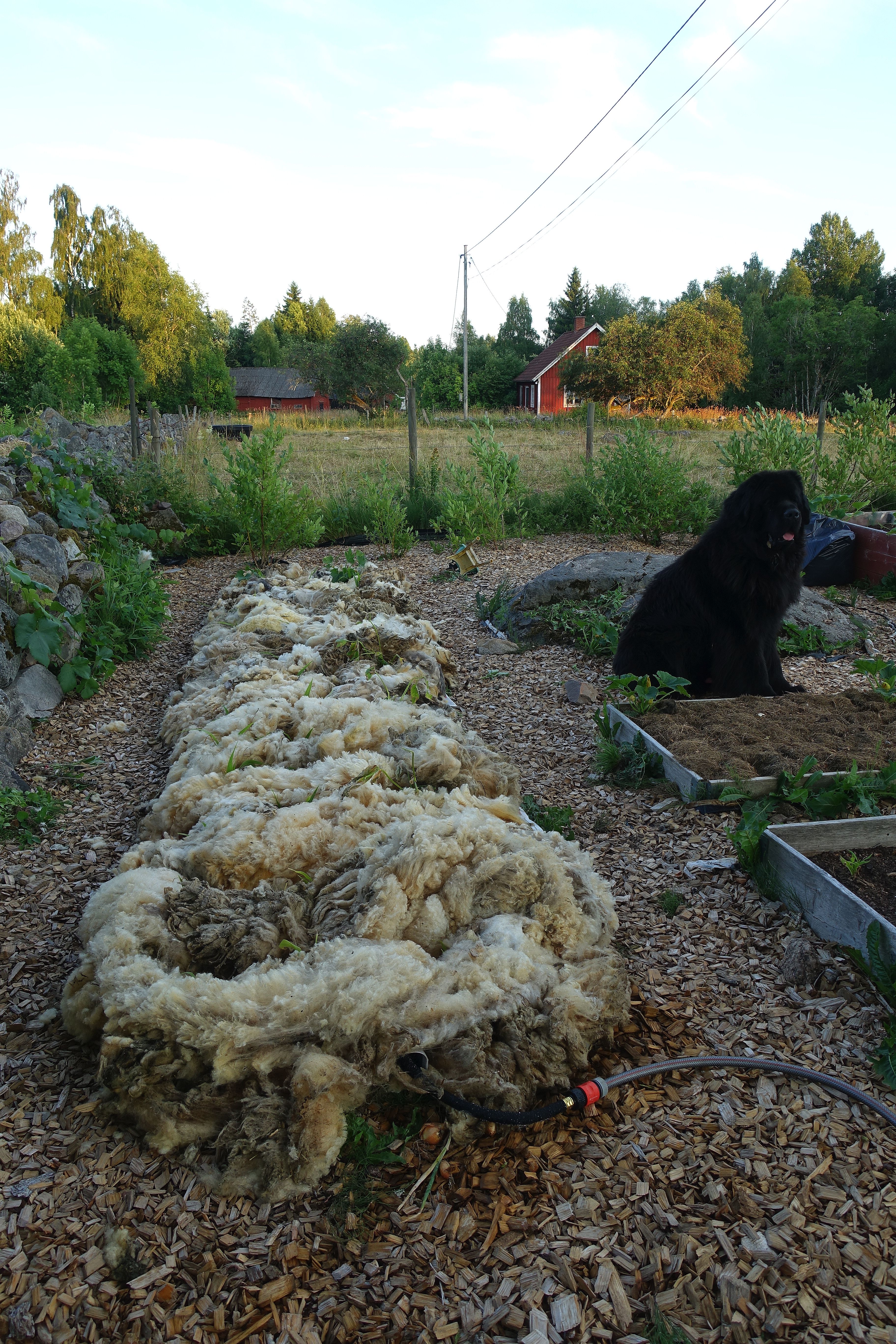Watering with a soaker hose
Finding a system for the watering in your garden is so important. I use many different types of hoses here at home, I especially like the soaker hose.

This smart soaker hose is made from a permeable material that releases the water when you connect it to a regular water hose.
It doesn't matter if you have a large or small garden, you still need to find good watering solutions especially for the most intense growing season. We have our own private well, and we need to be careful with the watering when it's dry outside. But walking around a large garden with a watering can is of course not easy either. That's why I think a drip irrigation system is a really good investment that can make a huge difference in the garden.
I bought my first one a few years ago and at that time, they were called “sweat hoses” here in Sweden. Perhaps not the nicest term, but it does make some sense. This type of hose is connected to the regular water hose and then “sweats” water through the permeable material it's made of. It works really well even with low water pressure. It's amazing! My hoses are several years old but still in great condition. This despite the fact that they have been buried in the soil or moved to a new spot every year.
More about watering and fertilizing: Fertilize with nettle water

I put the soaker hose in my beds next to the plants I want to water. The water drops are immediately absorbed by the soil and very little water goes to waste.

This is what the soaker hose looks like.
I mainly use the hose for plants that need some extra TLC. The water from the hose drips down right where it is, so it won't spread over a larger area. If I have a longer hose, I can put it back and forth over a long bed, for example between three rows of vegetables. This is a really efficient way to water your plants in an easy way.
Soaker hose and mulching
A great trick for drier periods (assuming that there's enough water to spare for the garden) is to put the hose underneath the mulch. This will help prevent the water from evaporating, all of the water goes into the soil and it helps build a really nice water reservoir for the roots.
Read more: Mulching with wool
You could also try putting the hose on a few pots that are standing close together so that you save some time watering.

I'm mulching this bed with wool with the soaker hose right underneath. I connected the soaker hose to a regular water hose.
Less water
Some distributors say that using a soaker hose will reduce water consumption with about 70 %. I haven't looked into it yet but my experience is that I don't need to use as much water with the soaker hose. It's especially efficient in the polytunnel, where the air gets less moist if I water right on the soil instead of using a regular hose. I also use other types of drip irrigation hoses for this.
You can find hoses in many different sizes, for example, 50 or 25 feet long (around 15 or 7.5 meters) in your regular garden store. I'm planning on putting hoses in my mulched beds to support the vegetables that had a hard time last summer when it was so hot and dry. For example, my artichokes and beans will need some extra help. If we have enough water, I hope that the vegetables will get a good start this season.
More about watering: How to water big plants
I also use a flat sprinkler hose that disperses water over a larger area. The only downside with this type of hose is of course that a lot of water will evaporate which just doesn't work for me in summer. The little holes in the hose are easily filled up with soil and dirt too, which of course affects the watering. This doesn't really happen with the soaker hose though, which is a real plus in my opinion.
/Sara Bäckmo



Leave a Reply
You must be logged in to post a comment.